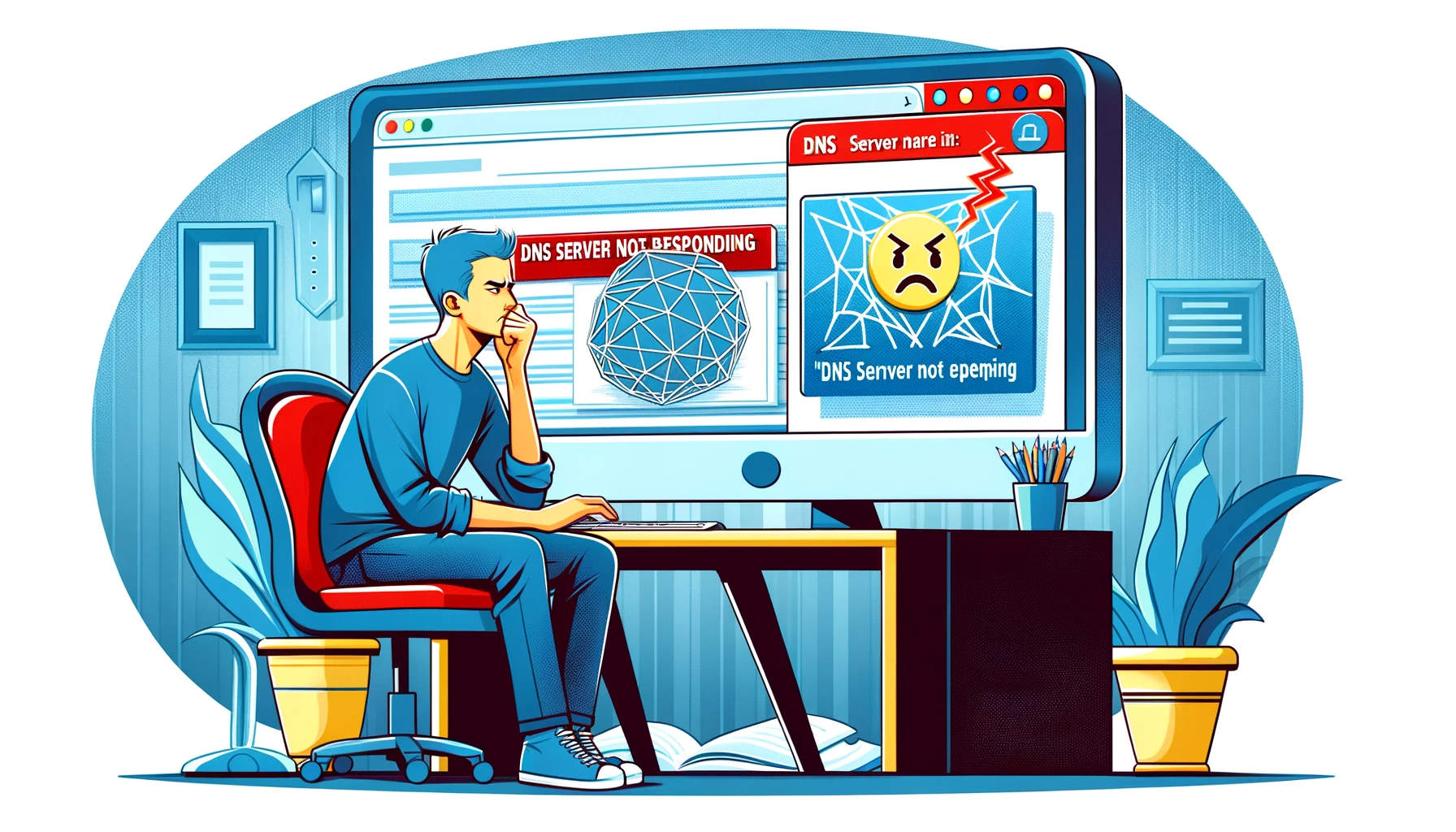Backup
Disaster Recovery
Disaster Recovery is an organization or business’s process of recovering access, functionality, and continuation of crucial IT infrastructure and systems after a natural disaster—or a planned one, such as a cyber attack. It is essentially the organization or business’ method of responding to and recovering from such an event.
CMS Types
Headless CMS
A headless CMS uses only the backend portion of the application. The frontend (think of this as the head) is removed. Then, the CMS functions as a content repository that delivers content in a format compatible with a variety of devices. This results in the ability to deliver content for websites, desktop applications, mobile apps, and other internet-connected devices from one data source.
Open Source CMS
Open source refers to source code that is made publicly available for anyone to view, modify, and distribute. Software developed under the open source model relies on community efforts and peer review.
Hosting
FTP
FTP, or File Transfer Protocol, is a crucial tool for WordPress site management, allowing users to directly access and manipulate server files, bypassing the WordPress dashboard. This access facilitates more efficient uploads, downloads, and file management, significantly enhancing backend operations. FTP is invaluable for performing updates, backups, and troubleshooting, offering a robust solution for maintaining and customizing WordPress sites.
Cron Job
A cron job is a repetitive task on a web server that runs as a shell script or command line function on the basis of a timing pattern established by administrators. On a technical level, a cron job operates on Linux web servers as directed by the settings in the crontab or cron table file at fixed intervals of time.
Public_html
Public_html or public html is the folder that contains all website files that will be shown to a viewer who visits your website. It is located inside your website directories.
Localhost
Localhost is the default hostname a computer uses to identify itself and its own internal network. It’s a respective term all computers apply to themselves. No matter what computer you are using, that computer always refers to itself as localhost.
Virtual Server
A virtual server is the virtualization of the computing resources of a physical server. It operates in a multi-user environment, where many virtual servers can run on the same physical hardware.
Physical Server
A physical server functions very similarly to a regular computer, just on a different scale. It’s a hardware server that includes memory, hard drive, network connectivity, and runs operating systems and applications off its internal hardware resources.
Domain Transfer
Domain transfer is the act of switching your domain name from one registrar (E.g. from GoDaddy) to a different one (E.g. to NameCheap).
Cache Types
In computing, different cache types play an essential role in improving performance and reducing input/output workload. Nearly every layer of the IT ecosystem benefits from multiple types of hardware and software cache types. Central Processing Units (CPU) operate faster, operating systems run quickly and smoothly, and web servers and applications are more reliable and responsive.
MySQL
MySQL is an open-source relational database management system (RDBMS) that allows you to add, access, and process data stored in a computer database.
PHP
PHP (Hypertext preprocessor) is an open source server side language for web development․ PHP uses an easy to understand syntax and can be used on all major operating systems. It can also be embedded into HTML, it is used to create user friendly, interactive, and dynamic pages.
Error Logs
Error logs are text files containing lists of errors that occur during application run. They are generated by computer systems to identify and correct issues.
Access Logs
A web server’s access log file contains detailed information about each request made to the server.
Caching
In computing, caching data improves performance and user experience by temporarily storing previously requested data in a cache for faster retrieval upon later requests.
Microsoft IIS
Microsoft Internet Information Services (IIS) is a web server for hosting websites and web applications. Like other web servers, it accepts requests for web pages or web applications and responds with the appropriate data.
Nginx
Nginx is a free, open-source, and powerful web server with asynchronous architecture. If configured correctly, it can solve a number of significant computing issues, from HTTP caching to the creation of a reverse proxy.
Apache
Apache is a free open-source web server software well-suited for a diverse set of computer types and software packages. The two main reasons for its popularity are its flexibility when it comes to configuration and its success in enabling large-scale projects.
FTP/SFTP
To understand SFTP, we first need to define FTP. File Transfer Protocol FTP) is the standard way to transfer files from your computer to another computer through a client-server connection, for example the internet.
Staging Environment
A staging environment is essentially an exact replica of your website. It is where you can test changes, such as plugins, themes, and custom codes, without affecting your live website. Once you are done testing and the changes are to your satisfaction, you can push the staging environment to live.
Data Center
In the web hosting industry, a data center stores all the files and assets that websites and web applications need to function properly.
SSH
Secure Shell (SSH), sometimes called Secure Socket Shell, is a network communication protocol that uses the client-server model to let two computers communicate via a secure remote connection.
SSD
Many desktop computers, laptops, and web servers use Solid State Drives (SSD) for storing and accessing data. Compared to traditional Hard Disk Drives (HDD), their improved data speeds and performance provide a faster, more stable environment for operating systems, applications, media, games, etc.
Hosting Types
WordPress Hosting
WordPress hosting is specifically tailored to optimize the performance, security, and manageability of WordPress sites. It offers specialized features such as automatic updates, enhanced security measures, and expert support, making it an ideal solution for anyone looking to ensure their WordPress site runs efficiently and remains secure against potential threats.
Web Hosting
Web hosting is where a website “lives” on the internet. A website is securely stored on a special computer called a server, and visitors can access it if they type the web address of said site into a browser or web client.
VPS Hosting
VPS hosting architecture is set up in a way that your website shares a physical server with other websites, but your part of the server is safely isolated.
Cloud Hosting
Cloud hosting is a network of virtual servers managed by your cloud hosting provider. The cloud server’s performance, security, and control are similar to those of a dedicated server. The notable difference of cloud hosting when compared to dedicated hosting is the affordable pricing.
Dedicated Hosting
Dedicated hosting is a type of hosting where a physical server is dedicated to a single client. Customizability is a key factor in this type of hosting, as clients get complete control over the server to install and configure any software. It is an ideal type of hosting for large businesses or organizations with high traffic and a high amount of ecommerce transactions.
Email Hosting
Email hosting is a service that is particularly specialized in the operation and hosting of emails, in which email messages and relevant files are stored on a server.
Managed Wordpress Hosting
Managed WordPress hosting is a specialized type of web hosting that offers many built-in features and tools made specifically for WordPress sites.
Security
WordPress Security
WordPress security is a set of measures and solutions implemented to protect a WP website from unauthorized access, use, modification, destruction, or disruption.
Malware
Malware is dangerous or plain annoying software designed to infect and covertly access a device without the knowledge of its owner. There are several types of malware: spyware, adware, phishing, Trojans, ransomware, viruses, worms, rootkits, and programs aimed at taking control of the browser.
Two-Factor Authentication (2FA)
2FA or two-factor authentication is a mechanism for authentication. It’s when you use a second method (besides the password) to confirm that a user is the owner of said account.
CAPTCHA/reCAPTCHA
CAPTCHA is a pretty lengthy abbreviation, it’s almost a whole sentence: Completely Automated Public Turing Test To Tell Computers and Humans Apart. It’s popularly known as simply captcha. In simple terms, this is a test for telling robots from people.
Security Breach
A security breach is any incident that results in unauthorized access to digital data, applications, networks, or devices. As a result of such an incident, access to information is gained by those for whom it isn’t intended and they might even be able to modify it. As a rule, this happens if the hacker manages to bypass the protection mechanisms.
SSL Certificate
An SSL certificate is a digital certificate that authenticates a website and allows an encrypted connection. The abbreviation SSL stands for Secure Sockets Layer, a security protocol that creates an encrypted connection between a web server and a web browser. Companies and organizations need to add SSL certificates to websites to secure online transactions and keep customer data private and secure.
WordPress User Roles
WordPress user roles are created to provide a site owner with security through the ability to dictate what other users can and cannot do throughout their site. WordPress has six predefined roles: Super Admin, Administrator, Editor, Author, Contributor, Subscriber.
Malicious Code
Malicious code is a code that takes on various forms (viruses, worms, spyware, Trojan horses, etc.) that is intentionally developed to cause harm to a computer and/or compromise data on a system.
Cross-site Scripting (XSS)
Cross-site Scripting (XSS) is a type of security vulnerability found in some websites and web applications that accept user input. It is when malicious scripts are injected into web pages in the form of browser side script, to be sent to unsuspecting users. It occurs when the web application accepts user input without validating or encoding it.
Brute Force Attack
A brute force attack is a type of attack in which the perpetrator aims to gain unauthorized access to accounts, systems, and/or networks by repeatedly submitting different combinations of login credentials until the correct one is guessed.
DDoS Attack
A Distributed Denial of Service (DDoS) attack is a type of DoS attack that uses multiple devices to attack a target. Whereas a Denial of Service (DoS) attack uses a single computer to launch an attack.
DoS Attack
A Denial-of-Service (DoS) attack is a type of cyber attack in which the perpetrator aims to shut down a machine, information systems, or network resource by interrupting its normal functioning, making it inaccessible to its intended users.
Web Tech Basics
DNS
The Domain Name System (i.e., DNS) is a decentralized naming database that identifies and translates internet domain names that are readable by humans into comprehensible IP addresses for machines that store the information called for by the browser.
Domain Registrar
A domain name registrar is an organization authorized to create/register new domain names and renew the validity of existing domain names. The organization also ensures the transfer of the necessary information about the domain and its administrator to the Registry and does domain maintenance.
DNS Records
The domain name along with its corresponding IP address are referred to as a DNS record. Designated nameservers are responsible for storing DNS data—keeping everything functioning smoothly.
Web Address (URL)
A web address or uniform resource locator (URL) is the internet or intranet location of a website, file or database. Using a web address, users can visit a website, download a file or send an email.
Website Domain
In the simplest terms, a website domain is a website's name, which makes it easier to remember the address of a website. Examples of domains are google.com, facebook.com, youtube.com, etc.
File Manager
A category of programs called file managers are used to access and manage files and directories through a graphical interface. File managers allow you to view, edit, move, copy, create, and delete files, whether they be on your computer or on a server.
IP Address
An IP address is a unique number assigned to a specific device or a domain name. This number is an identifier. In other words, the IP address is the coordinates to your device or domain and ensures that the correct data is routed to and from the correct device or domain.
Web Server
A web server is a computer with software designed to receive requests via HTTP (Hypertext Transfer Protocol) and other protocols, process them, and deliver the requested data stored in the database (text, image, video, etc.) over the internet.
Website Management
WordPress Dashboard
The WordPress admin dashboard is the central hub for managing your website, offering a comprehensive set of tools to create content, adjust settings, and monitor site health. It provides an intuitive interface for both beginners and experienced users to effectively manage various aspects of their sites, from posts and pages to user interactions and site appearance.
REST API
REST API is a way for websites and web applications to interact with a server. It is also called RESTful. The term consists of two abbreviations, which are deciphered as follows. An API (Application Programming Interface) is a code that allows two applications to communicate with each other, for example, a client application communicates to its server. REST (Representational State Transfer) is a way to create an API using the HTTP protocol.
WordPress Multisite
WordPress multisite is a feature by WordPress that allows users to manage multiple websites more efficiently from one dashboard. It acts as a network for all sites. If a person or business owns multiple websites, WordPress multisite allows them to log in to one WordPress dashboard and switch between any of the sites by using a dropdown menu. This is contrast to having to log in and out of multiple dashboards dedicated to specific individual sites.








